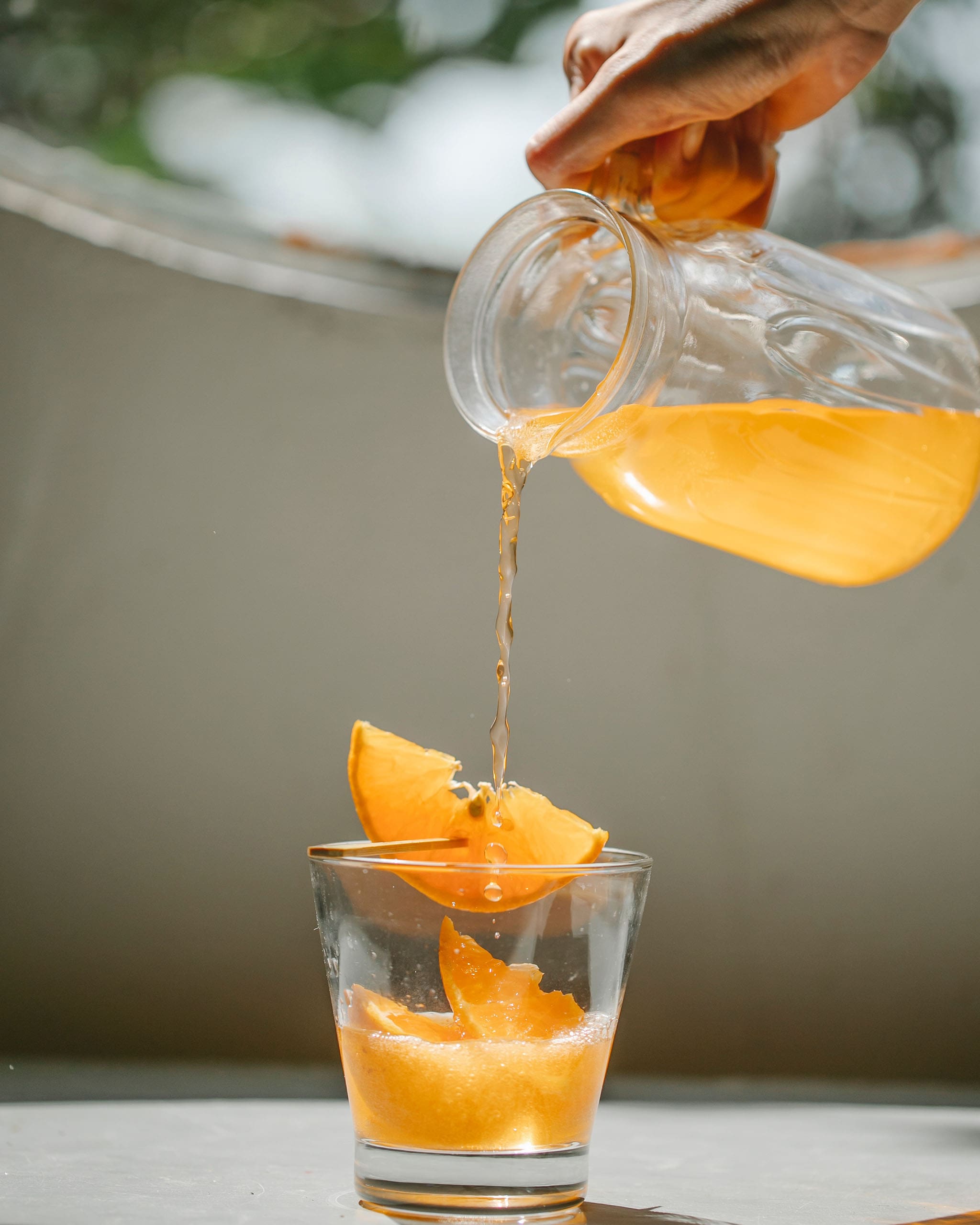Charlotte May / Pexels
It seems as though every week brings a new study declaring the “health benefits” of foods or drinks that, actually, aren’t all that good for us. One recent example is a study which found that fruit juice (containing only natural sugars) led to small but significant reductions in blood pressure when consumed moderately. Such findings often lead to headlines proclaiming that drinking fruit juice regularly can help with high blood pressure, which, when taken at face value, are – unfortunately – misleading.
Speak to any nutritionist or health expert, and you’ll quickly learn that fruit juice – even when it contains zero additives or added sugar – is not actually as good for us as we might think. Of course, juices which are totally natural (especially low GI fruits, like berries) can be beneficial for our health, but if you are making a smoothie for example, it’s best to blend fruit with some vegetables, to increase fibre intake and prevent extreme blood sugar spikes. Most of us aren’t drinking our own homemade versions anyway – we’re far more likely to turn to convenient smoothies and juices at the supermarket.
It’s not just juices – lots of other shop-bought foods and drinks are now deemed ultra-processed, despite being packaged with labels that point to their health benefits. Medical scientist and public health nutritionist, Dr Federica Amati, calls this the “health halo” effect. “It’s a term we use to describe when ultra-processed (UPF) and other packaged foods are labelled a ‘good source of vitamin D’, or ‘high in fibre’ to make it seem like they’re a healthy option,” she says.
“Examples include ‘low fat’ or ‘low calorie’, and even naming products to make them sound better by adding ‘light’ to the name. Minimally processed and whole foods don’t feature these: you never see a tin of beans that says ‘gut healthy’, or cucumber with ‘low calorie’ on it. Truly healthy food doesn’t need to market itself as healthy. Studies have shown that these tactics skew our behaviour,” Dr Amati says. “We’re more likely to opt for products that indicate they’re ‘light’, for example, than those that don’t.”
Shoppers are not to blame. The aim of food marketing is to sell to us, so it’s in manufactuers’ interests to package foods with these labels, misleading as they may be. “The science surrounding what makes some of these foods less healthy for us is also fairly recent, and some believe that differentiating these foods isn’t clear cut,” says Dr Amati. “The vast majority of studies on UPFs (that tend to feature these health halo claims) associate them with measurably poorer health outcomes.”
She recommends trying to look past labels and focusing instead on the actual ingredients list to understand exactly what it is that you’re buying (and consuming). My personal tip: if a food or drink contains a number of ingredients that you’ve never heard of (or that sound chemical) on the list, then chances are it belongs in the UPF category. You can also see added sugars and sweeteners on this list, which can help us to make more informed decisions on what we eat. “Cardboard is low fat, low calorie and low sugar, as well as being vegan and gluten free,” says Dr Amati. “But I wouldn’t recommend eating it!”
Here, she shares the five top food and drinks that might sound healthy, but often aren’t:
Supermarket juice and smoothies
“A classic example of a ‘source of vitamins’ that are ‘made with real fruit’ and/or ‘1 of your 5 a day’, supermarket juices and smoothies are sweet beverages that contribute directly to increased risk of tooth decay in children, and risk of obesity and type 2 diabetes in adults.”
Protein bars
“These are often labelled as ‘high in protein, ‘paleo’, ‘keto’ and ‘low in sugar’, and they often contains dozens of ingredients, many of which are artificial sweeteners and emulsifiers that we know are not helpful for our gut microbes and health. Let alone the fact that virtually nobody in the UK needs to be supplementing with protein.”
Breakfast cereals
“Again, breakfast cereals are ‘a source of vitamin D’, ‘made with whole grains’, ‘plant-based’ and ‘contain iron’, but are mostly UPF: high in sugar or sweetener, low in nutritional value and not a great way to start the day.”
Supermarket pastries and bread
“These are almost always UPF, have been frozen for weeks and cooked ‘fresh on site’ that morning. They can contain up to 30 ingredients, including different types of preservatives, emulsifiers, extracted sugars and starches and artificial colours. Fresh bread and pastry only requires flour, water, yeast or sourdough, and an additional pinch of salt or butter for pastry.”
Children’s snacks
“The worst culprit. It’s almost impossible for parents to know that they’re UPF because they’re marketed so well. One of the highest rates of UPF consumption is in children under the age of two. They are often weaned on pouches and pre-packed finger foods – this should be an occasional treat, not a majority part of their diet. Examples of marketing terms include ‘encourages self-feeding’, ‘real fruit pieces’ and ‘finger food’.”
This article was originally published on British Vogue.
